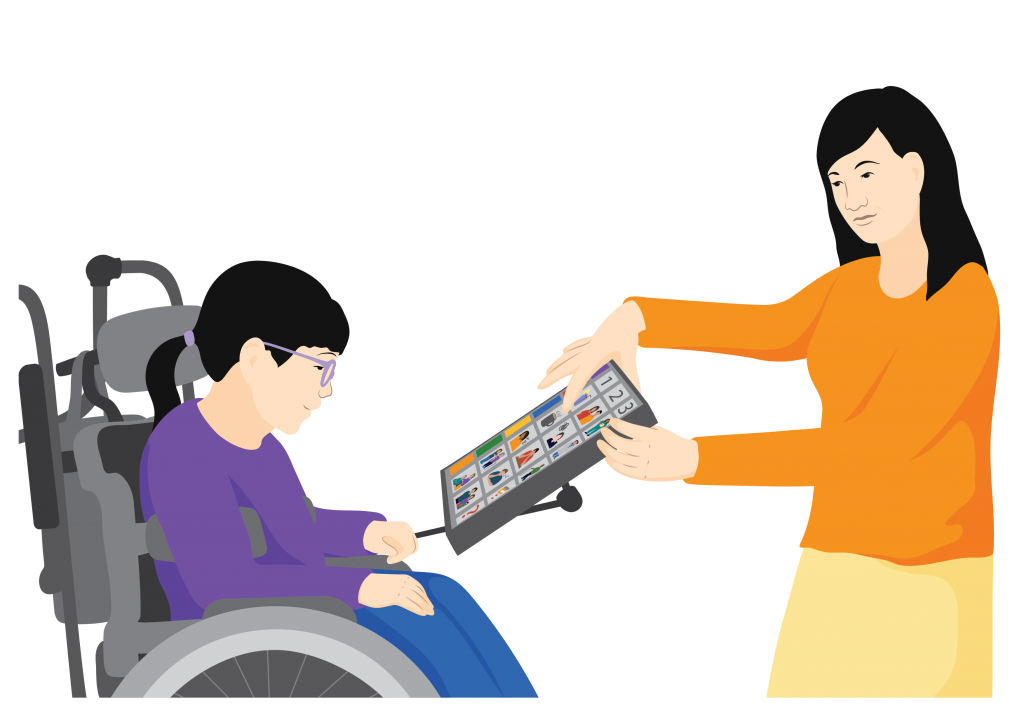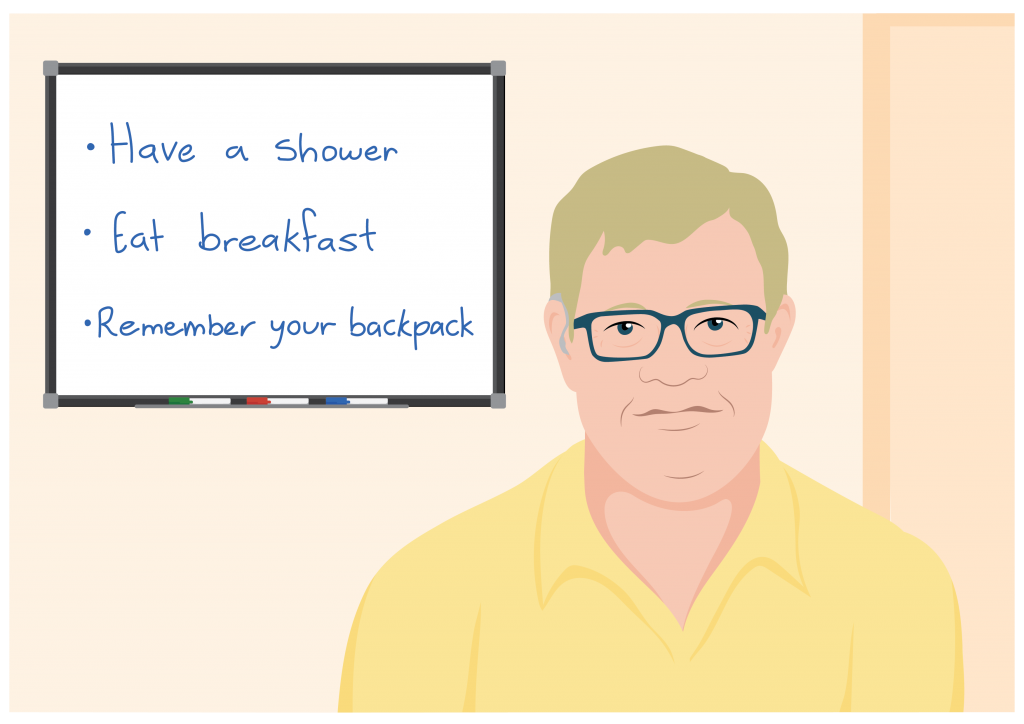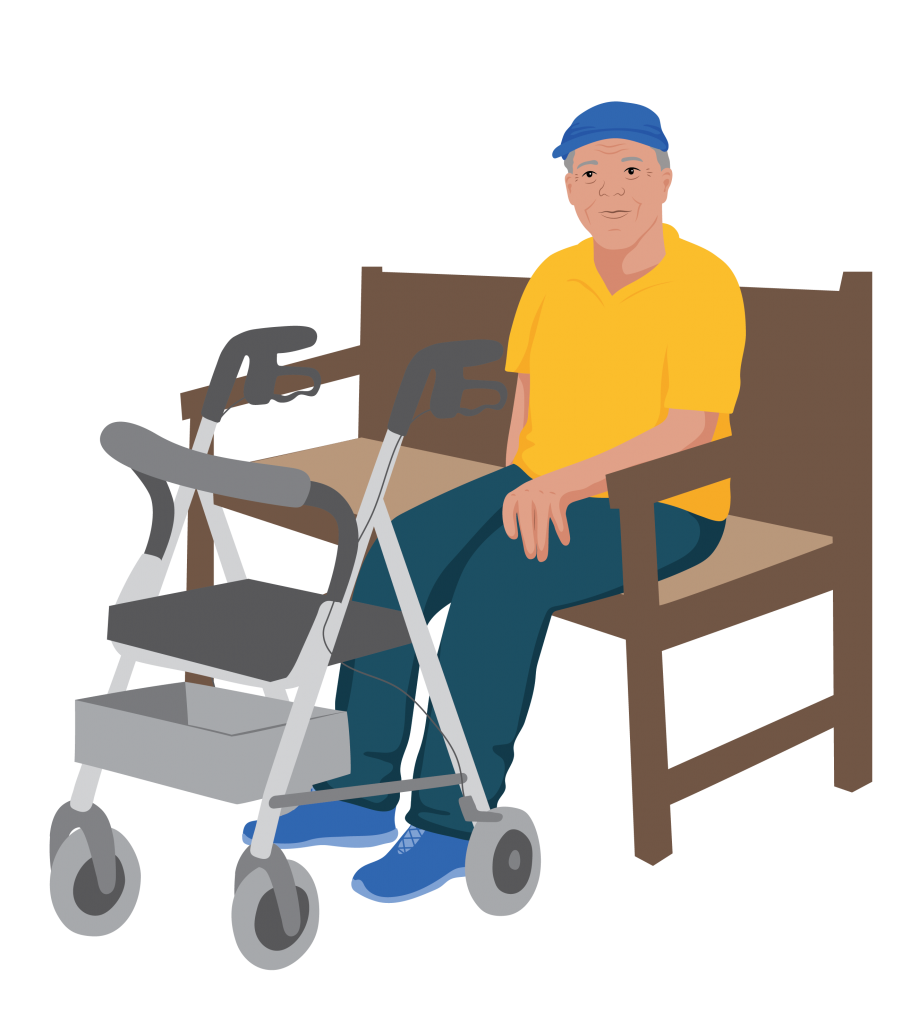The people who use assistive products
Many different people use assistive products. This includes:
- Children, adults and older people
- People with disability
- People with health conditions
People often need more than one assistive product. For example:
- A child who has difficulty moving and seeing may use a wheelchair for mobility, a cushion to sit comfortably and glasses to improve their vision.
- An older person might need walking aids, hearing aids and therapeutic footwear to prevent foot wounds.

Meet Ju.
Ju has cerebral palsy which affects her movement and speech. She uses a wheelchair to move about and to give her support to sit upright. She also uses a communication board to help her communicate with her friends and family, and to participate in school.

Meet Samuel.
Samuel is a teenager who has Down syndrome. He wears prescription glasses and uses a digital hearing aid. Samuel often gets distracted and does not always remember the things he needs to do. He uses a whiteboard in his home, and a mobile phone app. Both help him to remember the things he needs to do and any appointments he has.
Join the discussion forum
- Introduce yourself and where you are from.
- Share whether you use assistive products yourself, and/or why you are completing this module.
You have completed Lesson one!


